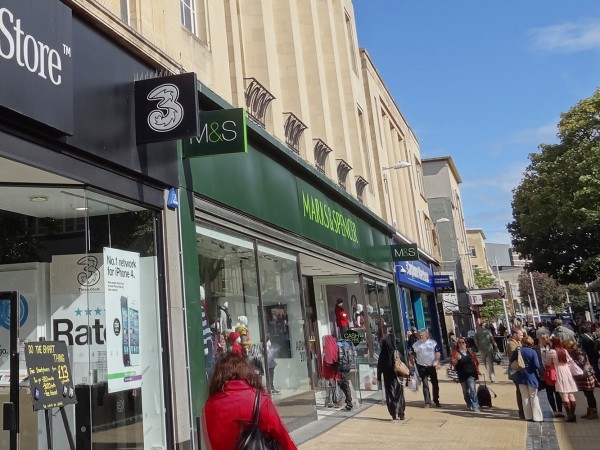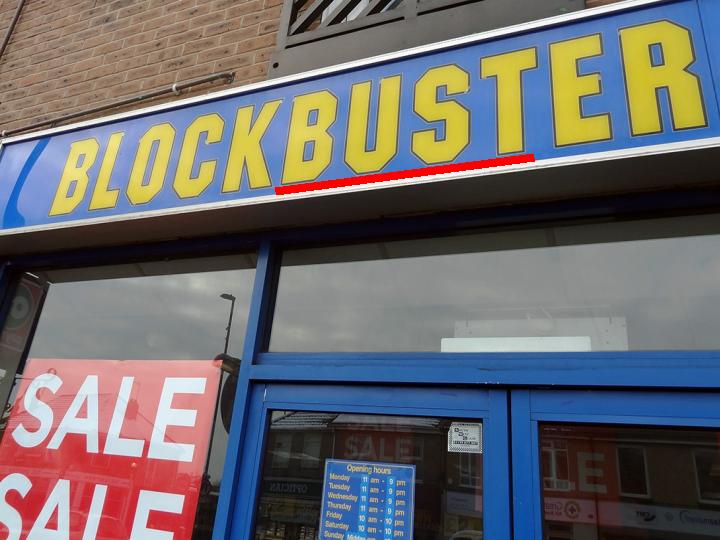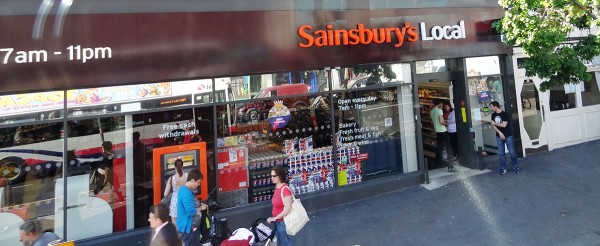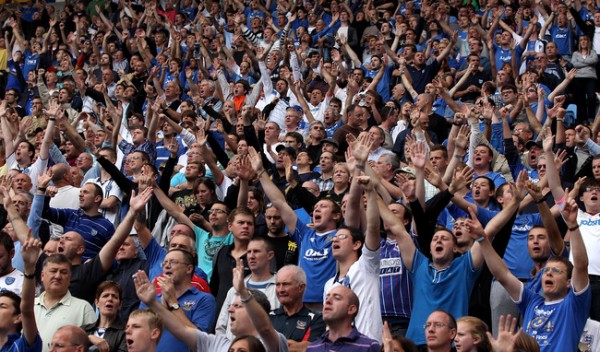 The typical UK high street is changing. Some analysts have been arguing for some time that high streets are dying, with shops unable to face the competition from large supermarkets and out-of-town malls. But it’s not all bad news for the high street: while some types of shop are disappearing, others are growing in number.
The typical UK high street is changing. Some analysts have been arguing for some time that high streets are dying, with shops unable to face the competition from large supermarkets and out-of-town malls. But it’s not all bad news for the high street: while some types of shop are disappearing, others are growing in number.
Part of the reason for this is the rise in online shopping; part is the longer-term effects of the recession. One consequence of this has been a shift in demand from large supermarkets (see the blog, Supermarket wars: a pricing race to the bottom). Many people are using local shops more, especially the deep discounters, but also the convenience stores of the big supermarket chains, such as Tesco Express and Sainsbury’s Local. Increasingly such stores are opening in shops and pubs that have closed down. As The Guardian article states:
The major supermarket chains are racing to open high street outlets as shoppers move away from the big weekly trek to out-of-town supermarkets to buying little, local and often.

Some types of shop are disappearing, such as video rental stores, photographic stores and travel agents. But other types of businesses are on the increase. In addition to convenience stores, these include cafés, coffee shops, bars, restaurants and takeaways; betting shops, gyms, hairdressers, phone shops and tattoo parlours. It seems that people are increasingly seeing their high streets as social places.
Then, reflecting the widening gap between rich and poor and the general desire of people to make their money go further, there has been a phenomenal rise in charity shops and discount stores, such as Poundland and Poundworld.

So what is the explanation? Part of it is a change in tastes and fashions, often reflecting changes in technology, such as the rise in the Internet, digital media, digital photography and smart phones. Part of it is a reflection of changes in incomes and income distribution. Part of it is a rise in highly competitive businesses, which challenge the previous incumbents.
But despite the health of some high streets, many others continue to struggle and the total number of high street stores across the UK is still declining.
What is clear is that the high street is likely to see many more changes. Some may die altogether, but others are likely to thrive if new businesses are sufficiently attracted to them or existing ones adapt to the changing market.
How the rise of tattoo parlours shows changing face of Britain’s high streets The Guardian, Zoe Wood and Sarah Butler (7/10/14)
The changing face of the British High Street: Tattoo parlours and convenience stores up, but video rental shops and travel agents down Mail Online, Dan Bloom (8/10/14)
High Street footfall struggles in August Fresh Business Thinking, Jonathan Davies (15/9/14)
Ghost town Britain: Internet shopping boom sees 16 high street stores close every day Mail Online, Sean Poulter (8/10/14)
Questions
- Which of the types of high street store are likely to have a high income elasticity of demand? How will this affect their future?
- What factors other than the types of shops and other businesses affect the viability of high streets?
- What advice would you give your local council if it was keen for high streets in its area to thrive?
- Why are many large superstores suffering a decline in sales? Are these causes likely to be temporary or long term?
- How are technological developments affecting high street sales?
- What significant changes in tastes/fashions are affecting the high street?
- Are you optimistic or pessimistic about the future of high streets? Explain.
 The BBC has recently published the results of its third report on average ticket prices for football for the top ten divisions in the UK. These include all four professional leagues in England (The Premier League, The Championship, League 1 and League 2), the top division in English non-league football (Conference Premier), the 4 professional leagues in Scotland (The Scottish Premier, The Scottish Championship, Scottish League One, Scottish League Two) and the top league in women’s football (Women’s Super League). Most of the headlines have focused on evidence of falling ticket prices in the 4 professional leagues in England.
The BBC has recently published the results of its third report on average ticket prices for football for the top ten divisions in the UK. These include all four professional leagues in England (The Premier League, The Championship, League 1 and League 2), the top division in English non-league football (Conference Premier), the 4 professional leagues in Scotland (The Scottish Premier, The Scottish Championship, Scottish League One, Scottish League Two) and the top league in women’s football (Women’s Super League). Most of the headlines have focused on evidence of falling ticket prices in the 4 professional leagues in England.
The BBC study focuses on four different categories of ticket.
– The most expensive adult season tickets
– The cheapest adult season tickets
– The most expensive adult match-day tickets
– The cheapest adult match-day tickets
The average price in each category is simply calculated as the price charged by each club in that category divided by the number of clubs. For example, the most expensive season ticket offered by Arsenal last year was £1955, whereas at Swansea it was £499. The average price was lower in all four categories for the three leagues in the English Football League (The Championship, League 1, League 2). For example, the price of the cheapest adult season tickets fell by 8.4% in the Championship, 1.6% in League 1 and 7.6% in League 2. Prices were also lower in three out of the four categories in the English Premier League (EPL). The only exception was the price of the cheapest adult season tickets which actually increased by 4.3%.
The overall trend in falling prices is in marked contrast to the previous year’s report that had found evidence of rising prices. For example the 2012 survey found that the average price of the cheapest adult match-day ticket increased by 11% on average across the EPL and EFL.
One factor that may be driving the apparent fall in prices in the English Football League is the falling attendances at games. Average attendance in 2012-13 was down 5% on the previous year – the second consecutive fall. It was 9% lower than in 2009-10 season. In complete contrast, attendance at EPL games were slightly up on the previous year and there were also record season ticket sales.
The increase in the average price of the cheapest adult season tickets in the EPL has received criticism from supporters groups. For example, The Football Supporters’ Federation called for far larger cuts in ticket prices, which they argued could have been funded by the big increase in the revenue from the latest TV deal. BskyB and BT paid a combined total of £3.018bn for the rights to show live games from the 2013-14 season to the 2015-16 season. This was an increase of £1.773bn on the previous deal. Malcolm Clarke, chair of the Football Supporters’ Federation, said
The Premier League has had an eye-watering increase in its media income. For example, they could knock £50 off the price of every single ticket of every single game for every single spectator in the Premier League this season and still have the same amount of money as they previously had.
Some have argued that it may also be in the commercial interests of the clubs to reduce prices. Professor Simon Chadwick from Coventry University commented that:
Lower prices and more fans can mean an increase in overall revenue, and there is also the secondary spend to consider: club merchandise, food and drink and so on.
However, care must be taken when interpreting this data because the report does not state how many fans actually pay the most expensive or cheapest price in each of the four categories. For example, the report found that Arsenal charged the highest price of £126 in the most expensive match-day ticket category. The club responded to this finding by stating that less than 100 people would actually pay this price at any given game!
Burton Albion was also reported as having the highest match-day ticket price of £30 for both League 1 and League 2. Once again the club responded by stating that only one or two of these tickets would be sold and car-parking, food and a programme were included in the price. Perhaps it would be more accurate to title the report “The average ticket price of the most expensive and cheapest seats for a football match”.
Some weighting system, such as that used to calculate the retail price index, would need to be used in order to obtain a more accurate picture of what is happening to average prices. It is possible that the price of tickets covered in the BBC report could be falling whilst the average price of all tickets could still be rising.
Articles
BBC Price of Football 2013: Average ticket prices fall BBC News (12/9/13)
Price of Football: The Premier League – then everybody else BBC News Matt Slater (12/9/13)
Price of Football: The Premier see some rises in cost BBC News Andy Cryer (12/9/13)
Price of Football: The Premier see some rises in cost BBC News (13/5/12)
Average ticket prices fall reveals Price of Football survey but Premier League continues to live in a world of its own The Independent (12/9/13)
Ben Robinson questions accuracy of BBC “Price of Football” survey BurtonMail David Broome (12/9/13)
Survey finds average prices of football match tickets have fallen The Independent (12/9/13)
Arsenal top BBC’s Price of Football table The Football Supporters Federation (12/9/13)
Questions
- Consider a number of factors that might determine the price of tickets for a particular football match.
- Draw a demand and supply diagram to illustrate what has happened in the market for tickets for matches in both the EPL and the EFL over the last couple of years.
- What non-price factors might have lead to the fall in demand for tickets for games in the English Football League?
- What does the evidence suggest about the income elasticity of demand for tickets at English Premier League games?
- In the article Professor Chadwick is quoted as saying that “Lower prices and more fans can mean an increase in overall revenue”. Using the concept of price elasticity of demand explain how this could be the case.
- Using a simple numerical example explain why the average price of tickets may be rising even though the price of tickets in the 4 categories in the BBC study are falling.
 The world’s population is set to go on rising – at least to 2050. And as population rises, so will the demand for food. But here we come up against a potentially catastrophic illustration of the law of diminishing returns. Population is set to grow, but the world supply of land is pretty well fixed. And with global warming, some land may become unusable.
The world’s population is set to go on rising – at least to 2050. And as population rises, so will the demand for food. But here we come up against a potentially catastrophic illustration of the law of diminishing returns. Population is set to grow, but the world supply of land is pretty well fixed. And with global warming, some land may become unusable.
According to Sir John Beddington, an expert in population biology and lead author of a government-commissioned report, The Future of Food and Farming, there could be serious consequences of this population rise, including rapid rises in the demand for food, rising food prices, rising land prices, the degradation of land, growing food poverty in many developing countries, growing political unrest and serious environmental damage. As the report’s Executive Summary states:
The global food system will experience an unprecedented confluence of pressures over the next 40 years. On the demand side, global population size will increase from nearly seven billion today to eight billion by 2030, and probably to over nine billion by 2050; many people are likely to be wealthier, creating demand for a more varied, high-quality diet requiring additional resources to produce. On the production side, competition for land, water and energy will intensify, while the effects of climate change will become increasingly apparent. The need to reduce greenhouse gas emissions and adapt to a changing climate will become imperative. Over this period globalisation will continue, exposing the food system to novel economic and political pressures.
Any one of these pressures (‘drivers of change’) would present substantial challenges to food security; together they constitute a major threat that requires a strategic reappraisal of how the world is fed.
The report specifically looks at five key challenges for the future:
A. Balancing future demand and supply sustainably – to ensure that food supplies are affordable.
B. Ensuring that there is adequate stability in food prices – and protecting the most vulnerable from the volatility that does occur.
C. Achieving global access to food and ending hunger – this recognises that producing enough food in the world so that everyone can potentially be fed is not the same thing as ensuring food security for all.
D. Managing the contribution of the food system to the mitigation of climate change.
E. Maintaining biodiversity and ecosystem services while feeding the world.
So what can be done and how realistic are the policy solutions? The following broadcasts and articles examine the arguments
Webcasts and podcasts
Articles
Report
Questions
- Summarise the main findings of the report.
- Does increasing the output of food per agricultural worker contradict the law of diminishing returns? Explain.
- What are the current failings of the system of global food supply?
- Why are problems of food supply likely to intensify?
- What externalities are involved in global food production? What impact do these have?
- In what ways might the externalities be internalised?
- What are the benefits and dangers of new technologies as means of increasing food supply?
- To what extent do the goals of increasing food supply and environmental sustainability conflict with each other?
- Explain the main drivers of change that affect food supply and demand? In what ways do these drivers interact with each other?
- “Although the challenges are enormous there are real grounds for optimism.” Explain the report’s authors’ thinking here.
Whether or not you admit it, most people are aware of what’s happening in the X factor. With massive viewing figures, the X Factor remains one the most highly viewed entertainment programmes, so it’s hardly surprising that demand for advertising slots is so high especially when people are waiting for news about the contestants. The X Factor pulls in £8000 per second from TV adverts and it is estimated that the charge for a 30 second advertising slot is a staggering £190,000, expected to rise to £250,000 for the live final. It looks like the recession has had little impact on those wanting to sponsor the X Factor.
Nevertheless, there has been some controversy this week. Every Monday morning we see stories about the contestants and this week was no exception. But, it wasn’t so much about the contestants this week, but rather it concerned the voting. Following the episodes over the weekend of 7th and 8th November 2009, both the ITV and Ofcom, the telecommunications regulator, received thousands of complaints as Simon Cowell gave his support to ‘Jedward’ over Lucie Jones, even though in earlier episodes, he had said he would ‘leave the country if they won’.
However, Ofcom has said that the X Factor won’t be investigated, as the regulator only investigates voting irregularities and the treatment of contestants and not the outcome of the programme. Meanwhile, speculation is rife that Simon Cowell either wants to keep Jedward on the show, because of their viewer ratings, or that by voting Lucie off, the public will rebel and vote Jedward off this week and Simon will avoid looking like the bad guy.
Who knew that the world of entertainment could be analysed using economics!!
Ofcom won’t investigate X Factor ITN (11/11/09)
750 complain to Ofcom over Lucie’s X Factor exit Wales Online (12/11/09)
£8k a second bonanza for X Factor ads as ITV chiefs cash in on Jedward mania Mail Online (11/11/09)
Watchdog rules out X Factor probe BBC News (10/11/09)
Thousands complain to ITV and Ofcom over X Factor ATV Network News, Doug Lambert (10/11/09)
X Factor: Simon Cowell is an evil genius and we love him Telegraph, Liz Hunt (11/11/09)
Simon Cowell’s evil genius rules The X Factor Guardian, Marina Hyde (13/11/09)
Resistance is futile in the face of this master of psychology Independent, Matthew Norman (12/11/09)
Jedward: X Factor twins John and Edward help ITV rake in advertising Telegraph (11/11/09)
The X Factor becomes the ‘British Superbowl’ as advertising fees soar Tines Online, Dan Sabbagh (11/11/09)
The Ofcom site can be found at:
Ofcom (Home Page)
Questions
- What is the purpose of regulation? What are the advantages and disadvantages of legal restrictions?
- What is the role of Ofcom? How does it regulate telecommunications and what other regulators are there?
- Why is the price for an advertising slot during the X Factor so expensive? What does this tell us about price elasticity and income elasticity of demand?
- Ofcom is not going to investigate X Factor. What are the main reasons behind this decision? Do you think this was the right decision?
- If a judge’s decision can increase advertising revenue, then from a commercial point of view does that make it the ‘right’ decision?
The recession of the past few months has taken its toll on organic farmers. Until recently, the industry was booming as consumers switched to products perceived as greener, healthier and more ethically produced. Now, as many consumers are feeling the pinch, they are switching to cheaper foodstuffs. The resulting decline in demand for organic food has turned profit into loss for many organic farmers. According to the first of the linked articles below, at least two organic farmers are leaving the movement each week.
But what will happen as the economy recovers and people start turning back to organic products? Given that it takes some two years to convert to organic standards, there could be supply shortages next year.
As UK shoppers tighten their belts, organic farmers feel the squeeze Guardian (11/4/09)
United Kingdom-Organic slowdown Farming UK (12/4/09)
Can the organics survive the current economy? Limerick Post (10/4/09)
Questions
- How close to perfect competition is the market for organic foods?
- What determines whether an organic farmer should continue in the market even though a loss is being made?
- What can you conclude about the income and price elasticities of demand for organic produce and the cross-price elasticity of demand for organic food with eating out?
- What is likely to happen to the market for organic food over the next two years?
 The typical UK high street is changing. Some analysts have been arguing for some time that high streets are dying, with shops unable to face the competition from large supermarkets and out-of-town malls. But it’s not all bad news for the high street: while some types of shop are disappearing, others are growing in number.
The typical UK high street is changing. Some analysts have been arguing for some time that high streets are dying, with shops unable to face the competition from large supermarkets and out-of-town malls. But it’s not all bad news for the high street: while some types of shop are disappearing, others are growing in number.


 The world’s population is set to go on rising – at least to 2050. And as population rises, so will the demand for food. But here we come up against a potentially catastrophic illustration of the law of diminishing returns. Population is set to grow, but the world supply of land is pretty well fixed. And with global warming, some land may become unusable.
The world’s population is set to go on rising – at least to 2050. And as population rises, so will the demand for food. But here we come up against a potentially catastrophic illustration of the law of diminishing returns. Population is set to grow, but the world supply of land is pretty well fixed. And with global warming, some land may become unusable.